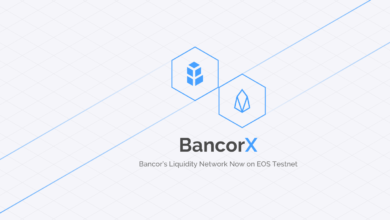Finance
JPM Coin – why so much backlash?

J.P. Morgan Chase is the first U.S bank to create a bank-backed cryptocurrency – JPM Coin, as announced last month.
Created by engineers, this digital token will be used to settle payments between clients. The bank that moves over $6 trillion daily, has chosen the blockchain technology to ‘transfer money at the speed at which smart contract close’, instead of relying on old technology of wire transfers. Even though the bank’s CEO Jamie Dimon has called Bitcoin a “fraud”, they seem to be betting quite a lot on digital tokens. Their head of blockchain projects, Umar Farooq, stated:
“The applications are frankly quite endless; anything where you have a distributed ledger which involves corporations or institutions can use this.”
More about the JPM Coin
The coin is limited to J.P Morgan clients that have already undergone regulatory checks, such as corporations, banks and broker-dealers – they can use it to settle payments. The lender is reportedly working on transferring cross-border payments and even corporate debt issuance to the blockchain.
One JPM Coins is valued at 1 dollar, which means that the value doesn’t fluctuate, similarly to a stablecoin. Clients can issue a coin upon a deposit of USD at the bank and use it to make a payment or purchase a security on the blockchain. After using the coin, the bank destroys it and gives back the amount in dollars.
Umar Farooq has highlighted three applications to the JPM Coin:
- International payments will be settled in real time, instead of taking more than one day through wire transfers between financial institutions based on “decades-old networks like Swift”.
- Institutional investors can use the JPM Coin to buy securities instantly. In April of last year, the bank tested a debt issuance on the blockchain, where a $150 million certificate of deposit for a Canadian bank was created through virtual simulation.
- The final application can be useful for big corporations that rely on J.P Morgan’s treasury services, such as Honeywell International and Facebook. In transactions unseen by retails customers, the bank handles a large amount of the world’s regulated money flows by moving dollars for numerous activities.
When asked if JPM Coins are a currency or legal tender, they replied:
“The JPM Coin isn’t money per se. It is a digital coin representing United States Dollars held in designated accounts at JPMorgan Chase N.A. In short, a JPM Coin always has a value equivalent to one U.S. dollar. When one client sends money to another over the blockchain, JPM Coins are transferred and instantaneously redeemed for the equivalent amount of U.S. dollars, reducing the typical settlement time.”
Even though retails investors won’t ever get to own a JPM Coin, Farooq argued that they are leading the race since a significant market share in corporate payments resides with them. Most of the big banks in the world are J.P Morgan’s clients, as well as the big corporations, resulting in 80% of the companies in the Fortune 500 banking with them.
Divided opinions
After the announcement, the crypto-sphere was flooded with a series of unfavourable reactions.
Brad Garlinghouse, CEO of the third largest cryptocurrency, Ripple’s XRP, has heavily dismissed the purpose of JPM Coin during a fireside chat at the DC Blockchain Summit at the beginning of the month. According to him, there’s no interoperability and fails to solve any “real issue.”
He’s not alone. Bill Barhydt, CEO of the cryptocurrency-based payment platform Abra, has expressed his opinion regarding enterprise blockchain and their cryptos: “nonsense.” According to him:
“It’s exactly what’s happening with this enterprise blockchain nonsense; where people have this fallacy that they’re going to make blockchain work inside the firewall. It’s all going to fail miserably.”
Cardano’s founder and co-founder of Ethereum, Charles Hoskinson, is one of the most vocal opponents of JP Morgan’s digital asset venture. During the Hong Kong Blockchain week he commented on the issue: “[They] just don’t get this space, [they] just don’t have any idea how these things work. It’s an abomination of a cryptocurrency, it’s an abomination of a concept.”
He added:
“It’s just proof of concept for the sake of being a proof of concept to say that they’re in the space and they can justify some sort of bizarre executive fantasy.”
Despite all the negative backlash, one of the world’s largest cryptocurrency exchanges spoke in favour of JPM Coin. Changpeng Zhao, CEO Binance, stressed, in a positive manner, that adoption is what matters. His tweet read:
Unpopular opinion: JPM/FB coins.
In a decentralized world, anyone can do as they please (within limits, so long as they don’t hurt others). The more people adopt #crypto, the better.
Adoption is #adoption. Welcome!
How well will they do? Well, let’s wait and see. https://t.co/ke3wYhsexI
— CZ Binance (@cz_binance) March 9, 2019
The silver lining attached to big-name companies
But why so much negative feedback? In reality, what does it mean to have a heavyweight in traditional banking joining the blockchain and crypto industry?
Despite Brad’s heavy criticism, he said:
“I think it’s great for the blockchain and crypto industry to have players like JPM leaning in.”
He continued to explain that it’s only a matter of time before banks enter the crypto frenzy. However, to achieve mainstream adoption, he believes that the answer lies in products such as decentralized apps and coins. The JPM Coin only works with institutional customers inside the JP Morgan ledger, therefore not representing blockchain’s core concept of decentralization.
Nonetheless, JP Morgan’s efforts can’t be cast aside. They are part of the shift experienced by big institutions that want to get their hands on the new technologies. As an example, Facebook reported last year that they are diving deeper into the field of blockchain. They had listed 19 blockchain-related positions and only last month they acquired a blockchain startup. Most of their efforts are still undisclosed, but they are undeniably looking to work with the technology.
Similarly, Goldman Sachs backed Circle’s launch of their USD Coin (USDC), and the Winklevoss twins presented their Gemini dollar stablecoin after receiving the green light from the Department of Financial Services in New York.
What to expect?
JP Morgan’s move is a first since the industry (traditional financing) has shunned digital currencies as too risky. Because JPM Coins are pegged to the U.S dollar, this means that technically, it qualifies as a stablecoin and represents less risk. It’ll run on Quorum, the bank’s private ETH blockchain and the bank claims that it’ll be extended to other platforms.
It is still unclear how it’ll get there and if the entire premise will even work. However, one this is sure – more and more heavyweights are entering the game. Even though this use of the technology wasn’t widely accepted by those that stand by the decentralization principle, it may be too early to tell. While it may lead to a broader adoption through a different path initially conceived by Satoshi Nakamoto, it also sheds light on how traditional banking can transition into the new era offered by blockchain.




Hello there, just became aware of your blog through Google, and found that it is truly informative. I am going to watch out for brussels. I will appreciate if you continue this in future. Lots of people will be benefited from your writing. Cheers!
That’s some inspirational stuff. Never knew that opinions might be this varied. Thanks for all the enthusiasm to supply such helpful information here.
F*ckin’ awesome issues here. I’m very happy to peer your post. Thanks a lot and i’m taking a look forward to contact you. Will you please drop me a e-mail?
A lot of blog writers nowadays yet just a few have blog posts worth spending time on reviewing.
My website: pornocomix
I have realized that over the course of making a relationship with real estate entrepreneurs, you’ll be able to get them to understand that, in every real estate financial transaction, a payment is paid. Ultimately, FSBO sellers tend not to “save” the payment. Rather, they fight to earn the commission by doing the agent’s work. In completing this task, they commit their money in addition to time to complete, as best they could, the tasks of an real estate agent. Those duties include displaying the home by means of marketing, offering the home to buyers, making a sense of buyer urgency in order to induce an offer, preparing home inspections, dealing with qualification inspections with the mortgage lender, supervising fixes, and aiding the closing of the deal.
I cherished as much as you’ll receive performed right here. The sketch is attractive, your authored subject matter stylish. nevertheless, you command get got an impatience over that you would like be delivering the following. ill surely come further earlier once more as exactly the same just about very regularly inside of case you protect this increase.
Thanx for the effort, keep up the good work Great work, I am going to start a small Blog Engine course work using your site I hope you enjoy blogging with the popular BlogEngine.net.Thethoughts you express are really awesome. Hope you will right some more posts.
Perfect work you have done, this internet site is really cool with superb information.
I have discovered that expenses for internet degree experts tend to be a terrific value. For instance a full College Degree in Communication with the University of Phoenix Online consists of Sixty credits at $515/credit or $30,900. Also American Intercontinental University Online offers a Bachelors of Business Administration with a entire education course requirement of 180 units and a price of $30,560. Online learning has made getting your college degree been so detailed more than before because you could earn your degree through the comfort of your dwelling place and when you finish from office. Thanks for all tips I have certainly learned through your site.
Hello.This post was really interesting, especially since I was looking for thoughts on this issue last Wednesday.